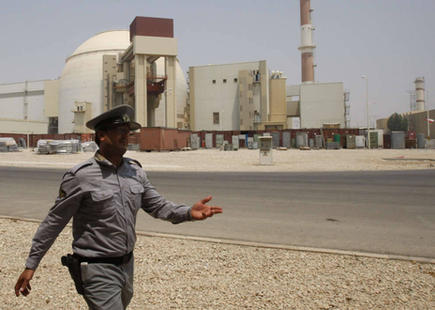__________________________________________________________________________________
When protests broke out in Iran this week over the devaluation of the nation’s currency, Khosrow Semnani saw the possible start of a solution.
Change Iran from within and you have a better chance of ending its nuclear weapons program than you ever would from a military strike, he said.
That is, of course, easier said than done. Groups within Iran have tried this before, but the Arab Spring seems always to wither under the foot of the Ayatollah Ali Khamenei.
If anyone has the passion to move the United States and its allies to deal positively with Middle East’s most troubling nation, however, it is Semnani, a Salt Lake resident who came here from Iran virtually penniless in the late 1960s and has since amassed a fortune.
Semnani has several good reasons for his passion. For one, he still has siblings and other close relatives living in Tehran. For another, he has just authored a report that uses science and best evidence to put a human toll on what a military strike would mean.
Titled, “The Ayatollah’s Nuclear Gamble,” the report conservatively estimates that 70,000 people might be hurt or killed in one key site alone. And in a nation where “the historical record suggests poor disaster management and inadequate emergency preparation,” that casualty list could be magnified by a factor of 10.
The numbers aren’t just pulled out of a hat. As Semnani reminded me when we spoke about this, matters of radiation and nuclear fallout are right in his wheelhouse.
If you’ve heard of Semnani at all, chances are it is in connection with the radioactive waste repository he founded in Utah’s west desert many years ago. It was Envirocare when he owned it. Today it is EnergySolutions. Semnani himself has degrees in chemistry and physics, as well as an honorary Doctorate of Science degree from Southern Utah University.
He spent two years putting together the report, which was released at an opportune time. Only a few days ago, world leaders, including Iran’s President Mahmoud Ahmadinejad, met at the United Nations to argue over Iran, Israel, sanctions or worse. Israeli Prime Minister Benjamin Netanyahu made a forceful plea for immediate action, calling for a “red line” beyond which Iran should not be allowed to go.
There is talk of a strategic military strike, similar to what Israel did against the Osirak nuclear reactor in Iraq in 1981. No one — not the Iranians, the Israelis or the United States — is talking about the human toll such a strike would take.
No one but Semnani, that is. His report says the thought of such a strike being similar to Osirak is a fantasy. He calculates strikes against four nuclear facilities, estimating shift workers of between 3,500 and 5,500 at any one time, and resulting toxic chemical plumes that reach tens of thousands of civilians or more.
Attacking a uranium conversion facility at Isfahan and an enrichment plant at Natanz would unleash hydrofluoric acid that, quoting a scientist in the study, would make people “drown in their lungs.”
The report already has made a mark. Time Magazine featured it, as did the French publication Le Point. A BBC broadcast about it reached Iran where, Semnani told me, the regime managed to quickly stop access to it. Other reports, however, also have reached Iran, where people are hungry for information about a situation that might affect them.
I’m guessing most Americans share Semnani’s goal, which is to see Iran become free and democratic. Then, as he told me, the government would be more worried about meeting its people’s everyday needs than preserving power at the expense of the economy and public safety.
But Americans, he believes, need to envision the end goal and understand how best to get there.
“This is a nation of 75 million people,” he said of Iran. “You don’t want to lose those people. You don’t want to make them rally around the people making the bombs.”
That would happen if the U.S. unleashed death and mayhem, he said. It’s a position that makes good sense, but the trick is getting Iranians to change before Iran itself does something desperate and destructive to the rest of the world.
Jay Evensen is associate editor of the Deseret News editorial page. Email him at even@desnews.com. For more content, visit his website, www.jayevensen.com.
Copyright 2012, Deseret News Publishing Company




